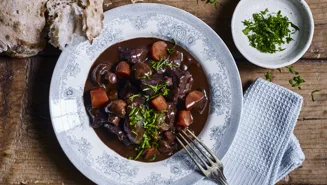
Yes, cream does contain lactose. Lactose is a type of sugar found in milk and other dairy products like cheese, butter, yoghurt, and cream. This natural sugar is what gives milk its slightly sweet taste. When milk is processed to extract cream, the lactose remains present, albeit in varying concentrations. This means that cream has lactose, but there are lactose-free alternatives on the market as well.
Is cream high in lactose?
No, cream is not high in lactose compared to, for example, whole milk. However, like all dairy types, cream contains varying amounts of lactose depending on its specific fat content. In general, as the fat content of the cream increases, its lactose content decreases.
Here is a quick rundown of lactose content in different types of cream per 100 grams based on their fat percentages:
Cream with 9 % fat contains 4.2 grams of lactose.
Cream with 13 % fat contains 3.95 grams of lactose
Single cream with 18 % fat contains 3.9 grams of lactose.
Cream with 38 % fat contains 2.98 grams of lactose.
Double cream with 50 % fat contains 2.4 grams of lactose.
You can see more about different dairy products and lactose in our articles 'What is lactose-free milk?', 'Does butter have lactose?', 'Is yoghurt lactose-free?', and 'What is lactose-free cheese?'.
The reduced lactose content in cream, especially in varieties with higher fat percentages, is attributed to the cream production process. This process involves separating the cream from the milk, resulting in a product with a higher fat concentration and consequently lower lactose levels due to the exclusion of milk solids.
To learn more about lactose, check out our overview of foods without lactose and foods with higher lactose levels.

Can you whip lactose-free cream?
Yes, lactose-free cream can be whipped. However, the journey to those fluffy peaks might be a bit different than with the regular type. Lactose-free cream generally behaves similarly to its regular counterpart when being whipped, but there are a few things to keep in mind.
Making lactose-free dairy products involves adding lactase, an enzyme that breaks down the milk sugar into simpler sugars – glucose and galactose. While this does not alter the whipping properties, it can slightly affect the texture and taste. It may take a bit longer to whip and might not hold its shape as long as regular whipped cream. Additionally, since the milk sugar converts into other sugars, lactose-free cream may have a slightly sweeter taste. But this is just perfect for desserts, right?
The key to successfully whipping lactose-free cream lies in its fat content. If it has a high enough fat content, it should whip up nicely and hold its shape. The lack of lactose in it does not affect the whipping process, as the fat content allows for the formation of stable, airy peaks.
Go for either specially formulated lactose-free whipping cream with 30-35 % fat or double cream with 40-48 % and up. And start slowly with the whisk. With some patience, it is easier to achieve the perfect texture in your lactose-free whipped cream.
What has more lactose – milk or cream?
Milk has higher lactose levels than cream. Although both products contain milk sugar, the concentration of it is generally higher in milk. Cream is derived from milk through a separation process that leaves it with lower levels of lactose than milk.
Depending on the type of milk, its lactose content is between 4.6 and 5 grams per 100 grams. In contrast, cream has 2.4-3.95 grams of lactose per 100 grams depending on the type. The reason for this disparity lies in the fat content. Cream is essentially the fat that has been skimmed off the top of milk, and it happens to carry less lactose with it.

How to make lactose-free cream
Lactose-free cream, like other lactose-free dairy products, is typically made by adding lactase to it.
The first step is to separate the cream from the milk. This is done using a centrifuge, which spins the milk at high speed. Due to the different densities of these two, with cream being less dense, the spinning causes the cream to rise to the top, allowing it to be separated.
The next step in the process is to deal with the lactose by adding a lactase enzyme. This enzyme's job is to break down the lactose into simpler sugars.
It is then pasteurised, which is essentially heating it to a specific temperature. The goal here is to kill any bacteria that might be present.
Different ways to use lactose-free cream
Like regular cream, lactose-free cream can be whipped into a fluffy topping for desserts, stirred into soups and sauces for a touch of richness, or added to warm or cold drinks for a velvety, indulgent finish.
The possibilities are endless when it comes to incorporating this deliciously creamy product into your favourite recipes.
Lactose-free whipping cream
Lactose-free whipping cream can be used to make an array of delectable desserts. Use it, for example, in fruit parfaits, where the cream's light, fluffy texture complements the fresh, juicy fruits, adding a sweet, creamy richness that balances the tanginess of the fruit.
Or in homemade hot chocolate, where it serves as an indulgent crowning touch, counterbalancing the intense cocoa with its milky sweetness and velvety mouthfeel. The whipped-in air brings an ethereally light texture to the silky mousse, while the cream's inherent richness adds depth to the flavour.
Lactose-free ice cream

If your sweet tooth craves some frozen delights, lactose-free ice cream is your dream come true. Whether you like the classics, such as vanilla or chocolate, or prefer an adventurous flavour like mint chocolate chip, a lactose-free ice cream brings a smooth, velvety texture that is an absolute delight to your palate. The creamy delight also makes a great base for homemade milkshakes.
Cooking with lactose-free cream
Lactose-free cream can be used for a wide range of savoury dishes, adding depth of flavour, richness, and a creamy texture to your favourite meals.
For example, use it to create a luxuriously creamy sauce for your pasta or meat. Alfredo sauce, carbonara, a spicy sauce, or a classic, creamy mushroom sauce can all be made lactose-free while still retaining the delicious, full-bodied flavour you know and love.
It is also ideal for hearty soups or chowders. It adds a layer of comforting creaminess to the texture that makes your dish even more satisfying, whether you are making a classic potato leek soup, a vegetable chowder, or another delicious soup.
All in all, lactose-free cream is a versatile ingredient that can elevate your cooking and baking and open new possibilities in the kitchen. So go ahead and experiment with this delicious, creamy delight and embrace the possibilities it can offer.







































